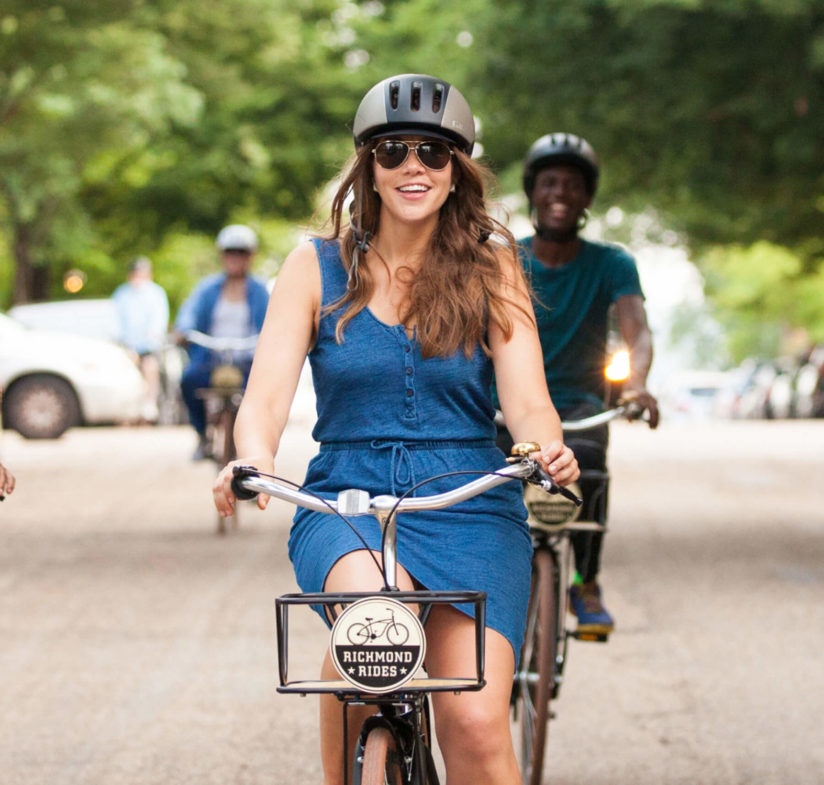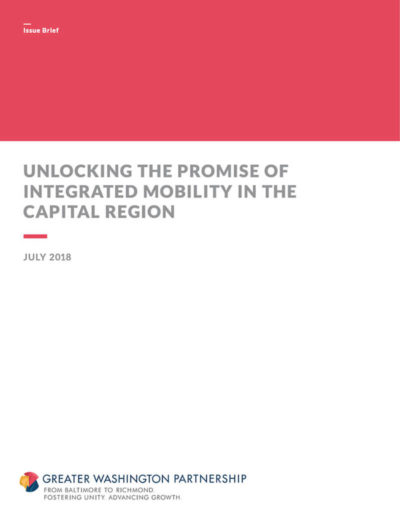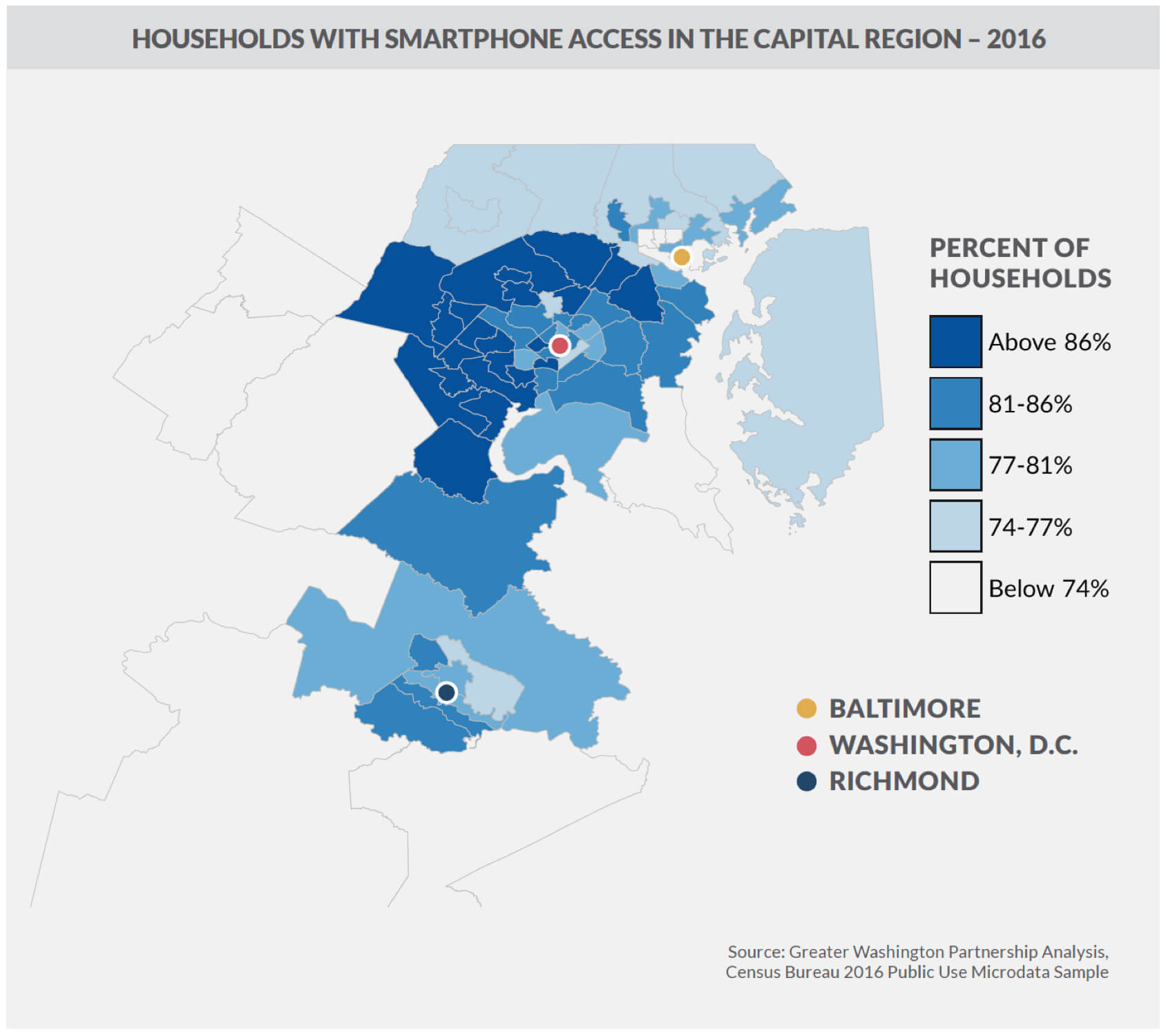Unlocking The Promise Of Integrated Mobility In The Capital Region
Publish Date: July 2018

 Download Report »
Download Report »
When you get into your car, you can use Waze to guide you to the optimal route. If traffic changes, Waze will redirect you and save you time. When you go to park your car, you can use Spothero to find and reserve a space, saving you even more time and eliminating the headache of circling to find parking. And thanks to EZPass, when you are driving on I-495 in Northern Virginia, the Intercounty Connector in Central Maryland, or the Powhite Parkway in Richmond, you no longer need to store coins in your car or wait in long lines to pay a toll.
Smart technology solutions have vastly improved the driving experience. Across the Capital Region, spanning Baltimore to Richmond, over 70 percent of daily commute trips involve an individual driving her or his own vehicle. At the same time, planning organizations throughout our region and the country have sought to improve alternatives to driving alone to ease congestion, mitigate pollution, improve economic competitiveness, and deliver a higher quality of life to our residents. Slight changes in consumer choices can improve the transportation system for everyone.
But where is the Waze-like experience for those who do not drive alone? Until we create a seamless platform for mobility services—particularly for those using more than one service in a single trip—individuals will continue to be encouraged to drive.
If you choose not to drive, you have some options thanks to technology, like Google Transit, which makes it easier to plan a trip and estimate the time. But Google Transit is not dynamic, and it does not help you buy tickets, toggle between multiple apps, farecards or dongles to complete a trip when using more than one mobility service. The problem is not technical; it is structural. With political will, MARC and WMATA could connect their ticketing systems to allow a consumer to purchase a single pass from Baltimore to Dupont Circle, via Union Station. With private sector cooperation, the Capital Region could become the first place in the United States to allow consumers to buy a single ticket for a trip involving both public and private services like ridehail or carshare—and give consumers a help line to call if a problem arises en route. But none of these simple innovations is available today.
Viewed through this lens, it becomes clear that technology has delivered a far more integrated experience for our region’s drivers than it has for consumers relying on other forms of mobility, both public (transit agencies and bikeshare systems) and private (ridehail, carshare, dockless bikeshare, and dockless scooters). As a result, consumers are nudged toward driving.
The Capital Region must empower each consumer to leverage the full potential of our transportation network by creating a single, seamless mobility platform. Such a platform can provide consumers with convenience, flexibility, and reliability that make mobility services collectively more competitive with driving alone. This will not happen overnight, but we can begin to move in this direction right now.
